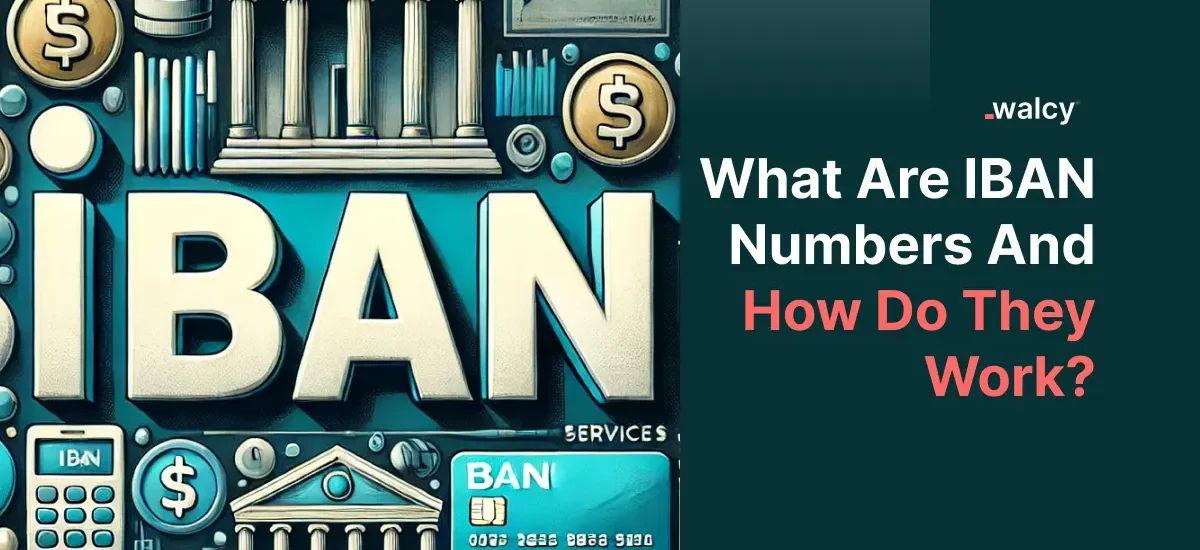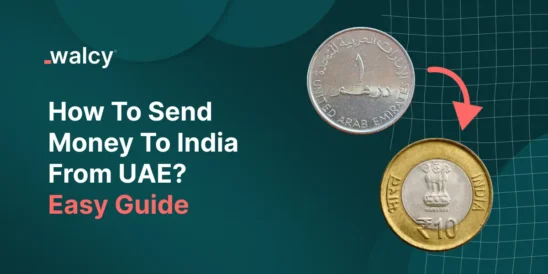If you have ever made an international transaction, you must have heard the term IBAN. Have you ever wondered what are IBAN numbers and how they work?
The IBAN system was invented for the redevelopment of standardized international transactions. This blog will briefly discuss IBANs, how they work, and why they are important in international banking terms.
What Is an IBAN Number?
An International Bank Account Number (IBAN) is the internationally agreed-upon standard system of numbering, developed for identifying bank accounts beyond national borders. It was first developed by the International Organization for Standardization and the European Committee for Banking Standards to facilitate and initiate a common standard of international payments.
This system ensures that all bank account numbers are unique globally and uniformly formatted, hence helping in the smooth processing of cross-border transactions. Not only does the IBAN increase the efficiency of international banking, but it also reduces the risk of errors to a large extent, hence turning out to be a very important tool in performing financial operations globally.
How International Bank Account Numbers (IBANs) Work?
The international bank account numbers make the international transaction discrete and uniform about bank account identification. This system increases the accuracy and efficiency of any cross-border payments, making sure that funds reach their destination free from errors or delays. Following is how IBANs work in detail:
- Initiation:
You initiate an international transfer by giving the international bank account number of the recipient. This unique identifier ensures the payment is directed to the correct account.
- Validation:
The IBAN is checked for accuracy and then processed into the bank’s system. Format and check digits are checked to confirm the IBAN as legitimate and complete.
- Routing:
Following the validation of the transfer, it is then routed around the international banking system. These include different banks and financial institutions that facilitate money across borders.
- Processing:
Subsequently, the recipient’s bank will process the payment and credit it into the indicated account. This step serves to correctly allocate the funds to the recipient’s account according to indications of the IBAN.
These standardized processes reduce the occurrence of errors or omissions and delays related to IBANs, ensuring that funds are transferred in an accurate and timely manner. The system offers a reliable framework for international banking that sustains world trade and financial transactions.
Know about international bank transfer in detail.
What Does An IBAN Consist Of?
An international bank account number includes a maximum of 34 alphanumeric characters, formatted to convey all the relevant information about an international transaction. The components of an IBAN include the following:
- Country Code:
It refers to a two-letter code representing the country of the account. For example, “GB” for the United Kingdom or “DE” for Germany.
- Check Digits:
Two digits that verify the IBAN and are inclusive of any possible errors of the account number. The digits are obtained from a specific algorithm to make sure that the IBAN is correct and verifiable.
- Bank Identifier:
A series of characters that identify the specific bank and branch.
- BBAN:
This includes the identifier and account number, which ensures that the account is uniquely identifiable within a country. The structure of BBAN varies from one country to another, though basically, it comprises a bank code, branch code, and individual account number.
For example, an international bank account number in Germany might look like this: DE89 3004 0014 0512 0123 00.
What Are IBAN Numbers Used For?
An international bank account number is mainly used for international payments. IBAN gives a standard format for money transfers across countries/cross-border, ensuring efficiency and accuracy. Here are the major uses of international bank account numbers:
International Money Transfers:
This is the case when an IBAN defines only one format for a bank account, making cross-border bank transactions easier. It avoids mistakes and failures in international money transfers and allows them to get through faster and more reliably. Be it sending or receiving money, the IBAN helps direct the transaction to the right account. (Know about money transfer business).
Verification:
Basically, this international bank account number is used by the banks to check the different details in an account before the processing of payment. The check digits in IBAN help the banks trace mistakes or inconsistencies in the account number and avoid wrong payment information. It is a crucial step in a fiduciary duty against fraudulent transactions or misdirected money. (Know about bank chargebacks).
Reducing Errors:
Traditional account numbers in different countries vary in form and length; therefore, there are probable errors in the entry of the same account details for overseas transfers. This is completely eradicated with international bank account number because it carries the same type of information about each account, irrespective of the country from where it originates. This uniformity ensures that funds reach the right recipient without any problem, thereby increasing the efficiency of the whole payment process.
Automated Processing:
A standardized format of IBAN enables banks and other financial institutes to process international transactions automatically. This, in turn, reduces manual intervention, hence increasing the speed of transactions and reducing the occurrence of human error. Accordingly, payments are processed at an increased speed without errors.
It would be cost-effective because IBANs would help minimize bureaucratic errors and manual corrections of international transactions. Fewer errors imply less cost from returning or relocating payments; hence, the process will be cheaper for both people and businesses. In general, IBAN within modern international banking offers a secure and respected way of processing cross-border payments.
Difference Between IBAN And SWIFT Codes
People generally think that international bank account number and SWIFT codes are similar things as both are involved in international banking. However, they have some differences and are made for different purposes. Some major differences are as below:
IBAN:
The IBAN is a method of identifying individual bank accounts that take part in international transactions. In other words, it makes sure that the right bank account is credited while processing foreign transactions. It contains details such as the country code, check digits, and the fundamental bank account number, which uniquely identifies each account.
SWIFT Code:
The SWIFT code, sometimes referred to as the Bank Identifier Code, is a series of eight or eleven-digit digits codes that identify a specific financial institution in a region. This assures that funds get transmitted to the authorized bank when making international payments. A SWIFT code does not carry any information about the specific account. It sends the funds to the appropriate financial institution, where the IBAN takes over and transfers the money to the account.
While the SWIFT code is an identifier of the bank or financial institution the international bank account number is for the identification of an individual account. The two codes work together to ensure that international payments are properly routed from the sender’s account to the receiving party’s account.
Know about SWIFT payment.
Know about the SWIFT alternatives.
Who Uses an IBAN?
Countries where international bank account numbers are primarily in use include some in Europe, the Middle East, parts of the Caribbean, and Central Asia. This list is not exhaustive but includes most of the following:
The greater part of the European countries:
Germany, France, and Spain, have implemented the system of IBAN, and within their banking structure, the process of implementation is complete. The countries in the Middle East, in particular, Saudi Arabia, Abu Dhabi, and Qatar, all introduced international bank account numbers to eliminate this gap in international financial transaction processing and to maintain consistency with the standard for the remainder of the banking world.
Some Caribbean countries:
While not adopted uniformly across the Caribbean, some of these nations, such as the Dominican Republic, have adopted IBANs to facilitate cross-border payment clearances and improve the interconnection of their financial markets with international markets.
Some Central Asian regions:
It is also applied in Central Asian countries like Kazakhstan to ameliorate and increase the accuracy of their banking transactions related to international transactions, particularly with expanded regional trade and investment.
Conclusion
The better the international bank account number, the more perfected the world of international finance is in making transactions seamless and correct. It is as a result of the standardized format of the account number that errors are reduced and the processing of international payments hastened. IBAN thus becomes an integral component of global financial infrastructure, remaining a major factor toward much smoother and more reliable cross-border transactions for both consumers and businesses.
Any person who deals with international banking or finance has to be aware of the role and the functioning of IBANs. Being aware of your IBAN and how it works, you will help yourself avoid errors and probable problems, misconceptions which frequently occur during your transactions. The role played by IBANs in strengthening global financial transactions increases day by day with the advancement toward a world with no boundaries.
Know everything about overseas payments
FAQs
What Is IBAN?
An IBAN is a standard international numbering system for personal bank accounts around the globe.
What If I Don’t Have An International Bank Account Number?
If your country does not use IBANs, you will typically use your regular account number along with a SWIFT/BIC code for international transactions.
What Does An IBAN Consist Of?
An IBAN consists of a country code, check digits, and a Basic Bank Account Number (BBAN), which includes a bank identifier and the actual account number.
What Can You Do With An IBAN?
An IBAN allows you to receive and send international payments with reduced risk of errors and delays.
What Countries Use IBAN?
Countries in Europe, the Middle East, some in the Caribbean, and parts of Central Asia use IBANs.
What Is An IBAN Business Account?
An IBAN business account is a bank account designated for business transactions that uses an IBAN for international payments.
Do follow us on Facebook and LinkedIn, to stay connected with us.



